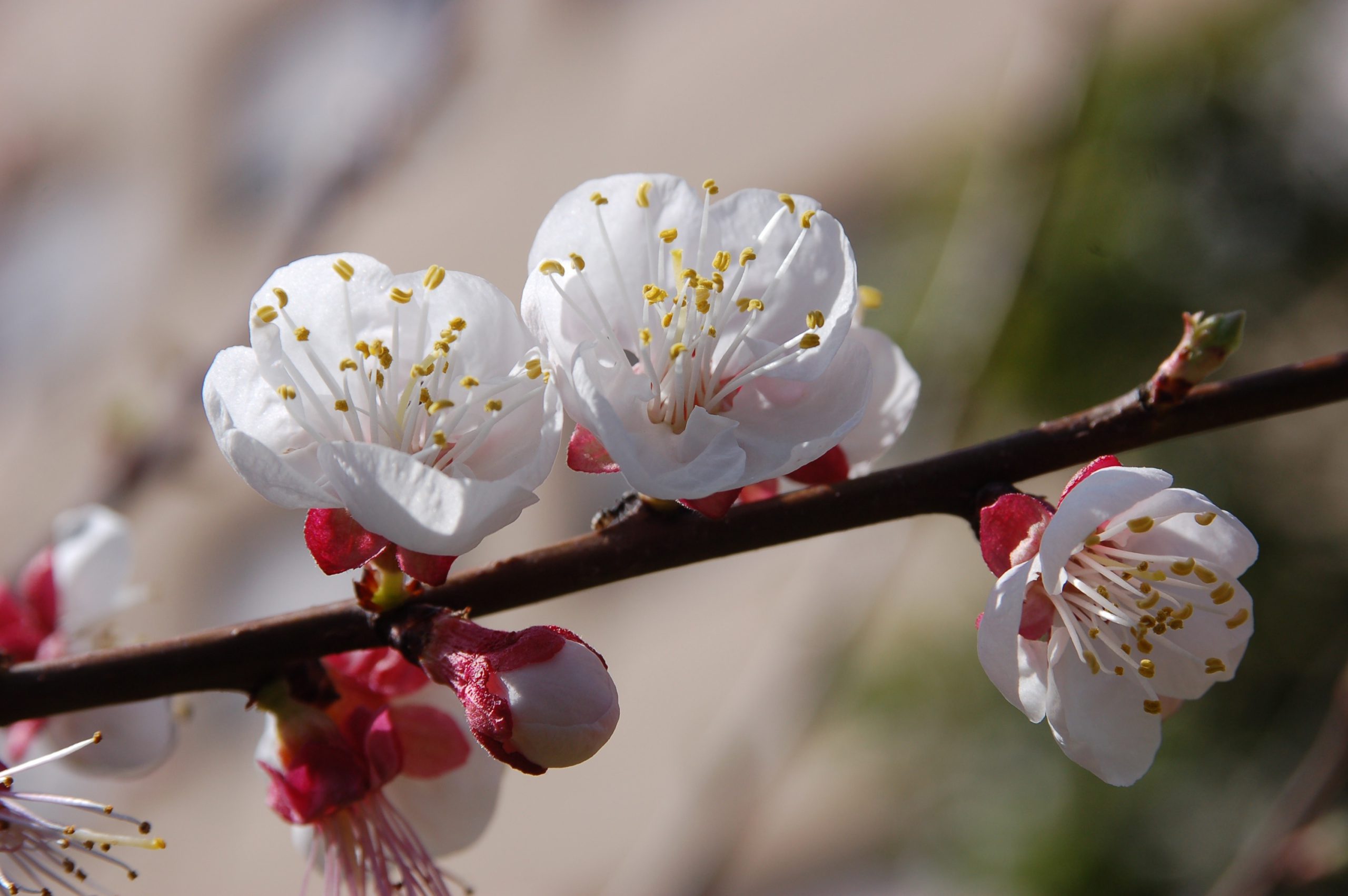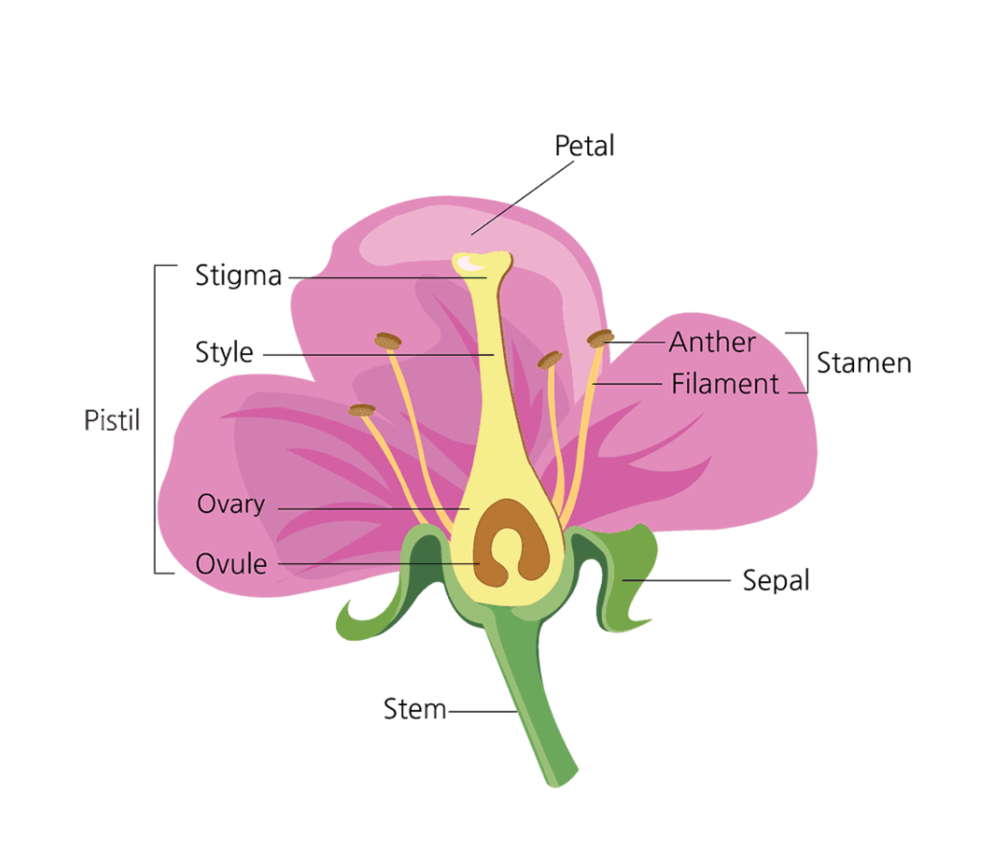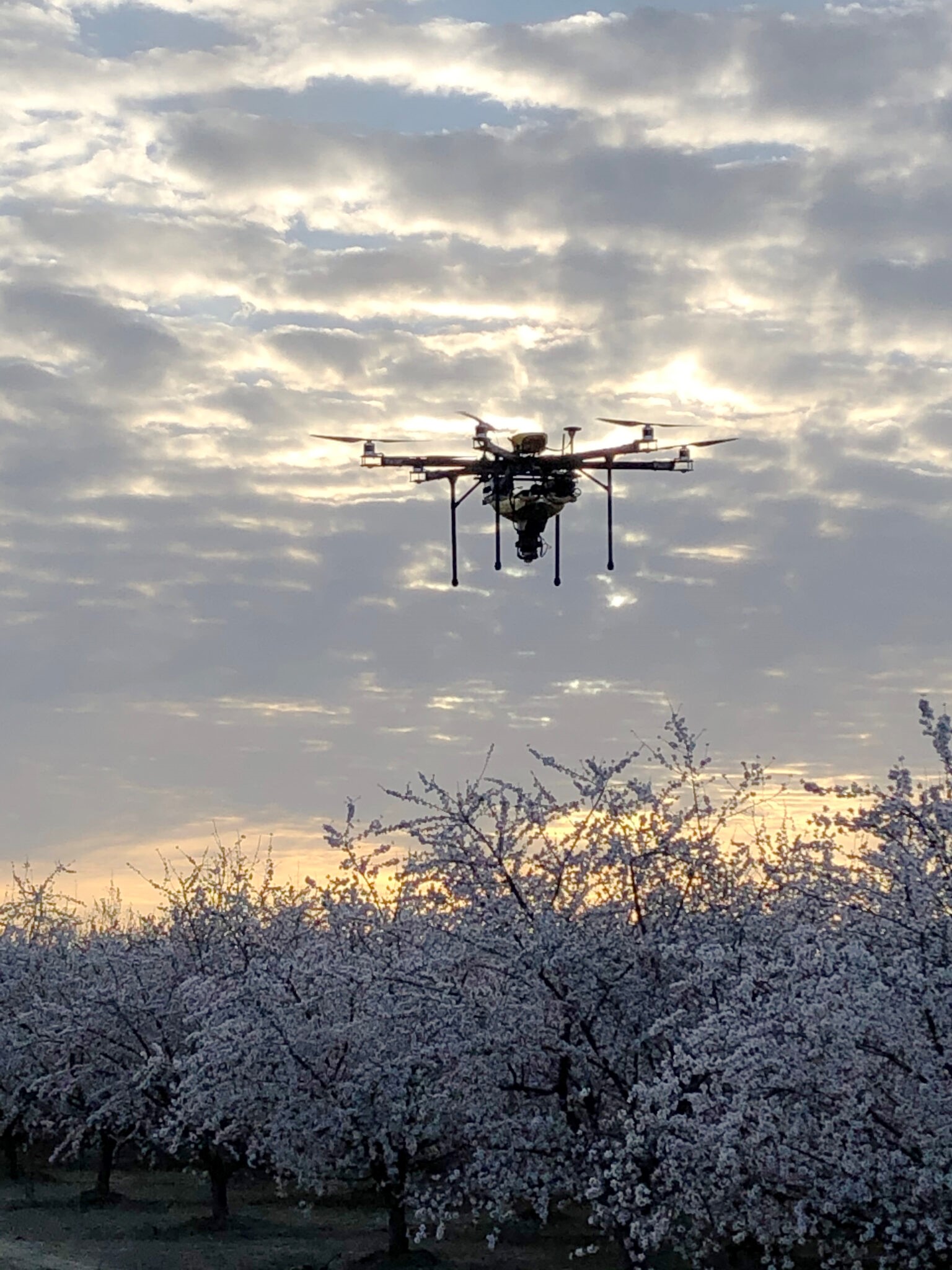Joe Traynor
There has been some confusion between the terms self-fruitful and self-pollinating almond varieties.
Self-fruitful varieties will set an almond with their own pollen – they do not need pollen from a different variety. There are currently a number of self-fruitful almond varieties and more are on the way. Currently, the best known ones are Independence, developed by Zaiger Genetics and sold by Dave Wilson Nursery and Yorizane, developed by the USDA and sold by Duarte Nursery and other California nurseries.
The flowers on these self-fruitful varieties are characterized by their female stigmas (one stigma per flower) that protrude one to several millimeters above the more numerous pollen-producing male anthers below. Nature has provided this spatial distance between stigmas and anthers to make self-pollination more difficult since self-pollination can lead to a less hardy final product. Almond trees in the current discussion (almond growers harvest the seeds before they are allowed to germinate; there is no ”right to life” movement for baby almond trees). The distance between stigmas and anthers on current self-fruitful almond varieties is an impediment to achieving maximum or optimum pollination (pollen transfer). Nature had no way of anticipating (and likely didn’t care) that this would be a future problem for growers of self-fruitful almond varieties. In some years there could be enough of a breeze to make the flowers self-pollinating in addition to being self-fruitful by pushing pollen from anthers to stigmas when the pollen is released by the anthers (anthesis). Tests have shown that bees can increase yields on the Independence variety by as much as 20% or more. No mention was made of wind conditions when these tests were run – slight breeze, windy or calm. The Almond Board currently recommends that Independence growers rent bees at low stocking rates. It is likely that growers of Independence, Yorizane, et al would not have to rent any bees if there were orchards with standard varieties (stocked with bees) within a mile or two of their orchards.
French prune varieties grown in California are self-fruitful with a flower structure like almond flowers (stigmas slightly above anthers). Prune growers used to rent bees but most don’t because setting too many prunes can reduce marketable sizes and create a thinning bill. It has been suggested that wind, provided by a helicopter or by an empty spray rig, one or more times during prune bloom could accomplish the pollination job (see the article Do Prunes Need Bees? in the August 1979 issue of Gleanings in Bee Culture now called Bee Culture, pp 423, 424). This article suggested using an empty spray rig, or a helicopter to blow pollen to the desired target (the flower stigmas) and concluded that “In the absence of bee activity, wind (natural or man induced) could accomplish the pollination job”. The same tactics could turn self-fruitful almond varieties into self-pollinating varieties.
For these new self-fruitful varieties, the cost of using an empty spray rig, a helicopter or in 2022 an aerial drone to blow almond pollen around one or more times during bloom should be weighed against the cost of renting a nominal number of bee colonies; renting bees could well be cheaper.












